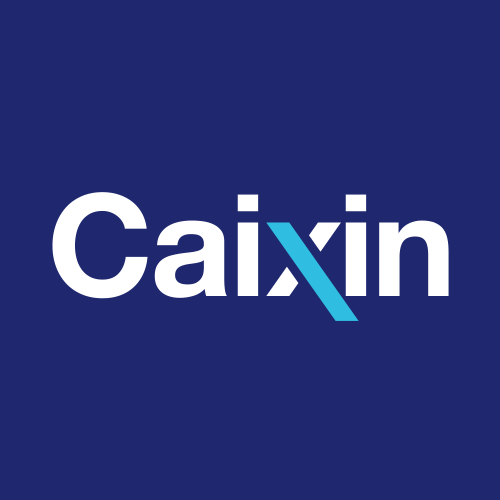Weekend Long Read: How the New Tariffs on Chinese EVs Will Slow Green Transition
Listen to the full version
The European Union on June 12 announced provisional tariffs on Chinese battery electric vehicles (EVs) based on its estimate of Chinese subsidies. They come after months of investigations by the EU, and are meant to be imposed on top of the 10% tariffs already in place. They are “provisional” because they might be revised downward if the Chinese producers can show evidence that the actual subsidies are lower. They may not be implemented if the EU can reach an agreement with the Chinese authorities to somehow reduce the quantity of Chinese EV exports to Europe.

Download our app to receive breaking news alerts and read the news on the go.
Get our weekly free Must-Read newsletter.
- DIGEST HUB
- The EU announced provisional tariffs on Chinese EVs, potentially adjustable based on actual subsidies, higher for non-cooperating producers.
- The U.S. implemented a 100% tariff on Chinese EVs under the Biden administration, criticized for protectionist motives and WTO rule violations.
- The tariffs could harm Chinese firms, raise costs and delay transitions to EVs in the EU and U.S., and prompt other countries to adopt similar measures.
The European Union (EU) announced provisional tariffs on Chinese battery electric vehicles (EVs) on June 12, based on estimated Chinese subsidies [para. 1]. These tariffs are additional to the current 10% in place and could be revised if Chinese producers provide evidence of lower subsidies. They might not be implemented if the EU reaches an agreement with Chinese authorities to reduce the quantity of Chinese EV exports to Europe [para. 1].
The magnitude of these tariffs represents the upper estimate of the subsidies Chinese producers receive across all government levels in their supply chains [para. 3]. The EU selected BYD Co. Ltd., Zhejiang Geely Holding Group Co. Ltd., and SAIC Motor Corp. Ltd. for cooperation and found subsidy rates of 17.4% for BYD, 20% for Geely, and 38.1% for SAIC [para. 3]. The provisional tariff for cooperative producers will be a weighted average of 21%, while non-cooperative producers will face a maximum tariff of 38.1%[para. 3]. This move brings the Biden administration’s “anti-subsidy” tariff of 100% on Chinese EVs, imposed without extensive investigation, into the spotlight [para. 5]. These U.S. tariffs are similar to the infamous Smoot-Hawley tariffs and have been ruled inconsistent with World Trade Organization (WTO) obligations [para. 6]. Other governments remain silent partly because the U.S. tariffs improve the competitiveness of their own products in the American market [para. 7]. U.S. tariffs have shifted imports from China to countries like Mexico, India, and Vietnam, while smaller countries face an increased risk of protectionist measures being imposed by larger nations [para. 7].
Chinese cost advantages are sometimes deemed so significant that a 30% tariff increase might not halt their EV exports [para. 9]. However, differences in safety standards between markets and the need for sufficient sales quantities to maintain profitability suggest otherwise. Specific standards like pedestrian safety in China versus driver safety in the U.S. mean that an EV model for one market is not identical for another; thus, tariffs reducing sales expectations may end exports altogether [para. 9]. While some Chinese EV producers may consider establishing factories in the U.S. to create local jobs and tax revenue, perceived biases in U.S. foreign investment reviews might deter them from the market [para. 10].
Global EV subsidies, intended to reduce carbon-intensive lifestyles, should range between 20% to 50%, particularly with insufficient global carbon taxes [para. 11]. Due to high debt levels, the EU and U.S. prefer imposing tariffs over subsidies [para. 11]. These tariffs negatively impact Chinese firms' profits and jobs, but also raise costs for EU and U.S. households and delay their transition to climate-friendlier vehicles [para. 12]. Globally, these tariffs might increase Chinese EV exports to other markets, benefiting consumers in those regions but increasing competitive pressure on countries with sizeable auto industries. Governments in such regions may feel compelled to adopt similar tariffs [para. 13].
Overall, a global negotiation for a common pro-climate subsidy scheme for EVs and a unified carbon tax would have been a more beneficial approach [para. 14]. The original article, penned by Shang-Jin Wei, professor at Columbia University, suggests that such cooperation could have yielded better global outcomes in the EV market [para. 15]. The piece was first published in the Fudan Financial Review and edited for clarity in this version, with Joshua Dummer as the contact editor [para. 15][para. 16].
- BYD Co. Ltd.
- BYD Co. Ltd. is a Chinese electric vehicle producer headquartered in Shenzhen. In the EU’s investigation on subsidies, it was found to receive a 17.4% subsidy rate. Along with Zhejiang Geely Holding Group and SAIC Motor Corp., BYD was selected for the EU’s assessment of Chinese EV subsidies, which led to the imposition of provisional tariffs on Chinese EVs imported into the EU.
- Zhejiang Geely Holding Group Co. Ltd.
- Zhejiang Geely Holding Group Co. Ltd., headquartered in Hangzhou, is one of the three Chinese EV producers selected by the EU for subsidy investigation. The EU concluded that Geely receives a subsidy rate of 20%.
- SAIC Motor Corp. Ltd.
- SAIC Motor Corp. Ltd., based in Shanghai, was one of three Chinese EV producers investigated by the EU for subsidies. The investigation concluded that SAIC receives a subsidy rate of 38.1%, the highest among the companies reviewed. Consequently, SAIC faces the maximum provisional tariff rate of 38.1% on its battery electric vehicles exported to the EU.
- 2020:
- A panel at the World Trade Organization (WTO) ruled that the U.S. tariffs on Chinese imports erected under former President Trump and largely maintained by Biden are inconsistent with the U.S. legal obligations at the WTO.
- June 12, 2024:
- The European Union announced provisional tariffs on Chinese battery electric vehicles (EVs) based on its estimate of Chinese subsidies.
- GALLERY
- PODCAST
- MOST POPULAR






